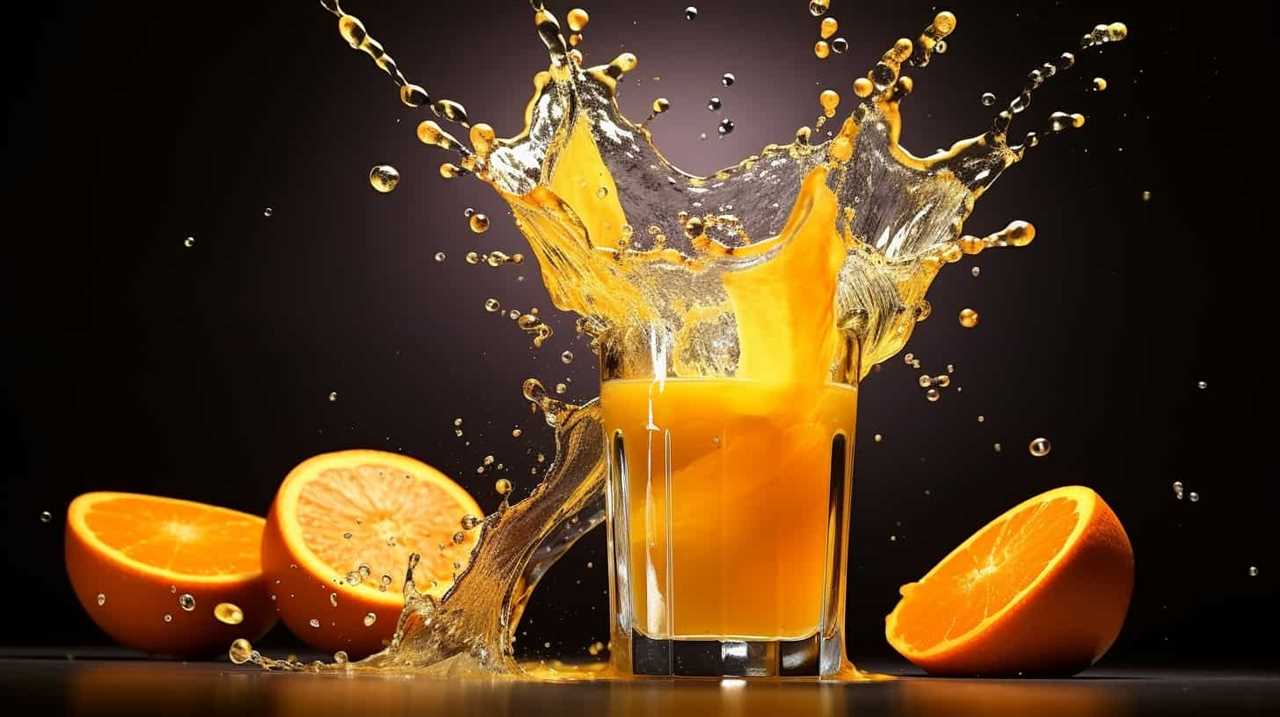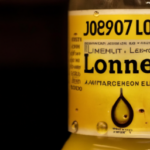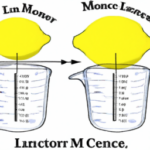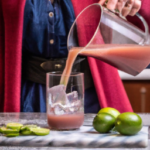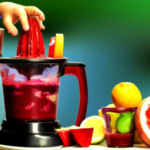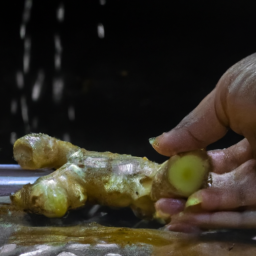Juice concentrates capture the vibrant essence of life in a bottle through the extraction, refining, straining, and condensing of fruit or vegetable juices. This process yields a potent, flavorful concentrate that adds depth to cocktails and enhances the taste of sauces and marinades.
The process of making juice concentrates can seem daunting, but it is actually quite simple and straightforward. By following a series of steps, fruit and vegetable juices can be transformed from their natural state into a more concentrated, versatile form that can be used in a variety of applications.
In this article, I will guide you through the process of making juice concentrates, from the extraction of juice to the final concentration, and explain the different types of concentrates that are available, as well as their pros and cons. Whether you are a professional chef, a home cook, or just someone who enjoys the taste of fresh juice, this article will provide you with all the information you need to know about how juice concentrates are made.
Key Takeaways
- Juice concentrates are made by extracting juice from fruits or vegetables and reducing it down to a thick, concentrated form.
- Clarification of juice is important to remove impurities and achieve a clear liquid for further processing.
- Concentrating juice involves removing water from the juice to increase its concentration levels.
- Juice concentrates offer a convenient and nutrient-dense option for those on the go, but may be high in sugar and calories if they contain added sugars or are made from fruits with naturally high sugar content.
Extraction of Juice
Now you’re gonna take those ripe fruits and crush ’em up to release all the juice inside.
Juice extraction techniques play a crucial role in determining the quality and yield of the final product. There are several methods of extracting juice from fruits, but the most common ones include pressing, pulping, and enzymatic extraction.
Pressing involves applying pressure to the fruits to extract juice, while pulping involves grinding the fruits into a pulp and then squeezing out the juice. Enzymatic extraction is a more modern technique that uses enzymes to break down the fruit cells and release the juice.
Regardless of the technique used, the goal is to optimize juice yield while maintaining the desired flavor and aroma profile. Once the juice is extracted, the next step is to clarify it to remove any impurities and achieve a clear liquid for further processing.
Clarification of Juice
Before the juice concentrate’s production, the extracted juice undergoes a process of clarification to remove any impurities or solids. This step is crucial to ensure that the final concentrate has a clear and consistent quality. There are several juice clarification techniques, such as settling, centrifugation, and filtration, that can be used depending on the type of juice and the desired end product.
Clarification of juice has several benefits for concentrate production. Removing impurities and solids not only improves the appearance of the juice but also prevents potential issues during the concentration process. Impurities can interfere with the concentration process and affect the overall quality of the final product.
Additionally, clarified juice has a longer shelf life than unclarified juice, which is important for the storage and transportation of the concentrate. With the juice now clarified, it can proceed to the next step of filtration, where any remaining impurities are removed.
Filtration of Juice
To filter the juice, you’ll need to choose the appropriate method based on the type of fruit or vegetable used.
For instance, if you’re processing juice from citrus fruits like oranges, lemons, or limes, you can use membrane filtration. This method separates the juice from the pulp and other solids by passing it through a porous membrane. The membrane pores are small enough to capture the solids, but large enough to allow the liquid to pass through. This process results in a clear and smooth juice, free from any impurities.
Another method for filtration is reverse osmosis. This method is commonly used for fruits and vegetables with high sugar content, like grapes or apples. Reverse osmosis uses a semi-permeable membrane that separates the water from the juice. This process removes water and concentrates the juice, resulting in a more flavorful and potent product.
After filtration, the juice is ready for the next step of juice concentrate production, which is the concentration of juice.
Concentration of Juice
You can intensify the flavor of your fruit or vegetable extract by reducing the amount of water, using evaporation techniques akin to boiling off excess water in a pot to thicken a sauce. Concentrating juice involves removing water from the juice to increase its concentration levels. This is achieved through various methods such as vacuum evaporation, reverse osmosis, or freezing.
Vacuum evaporation involves heating the juice to a specific temperature, then subjecting it to a vacuum to lower the boiling point of water and evaporate it. Reverse osmosis works by passing the juice through a semi-permeable membrane that separates water from the concentrate. Freezing is another method where the juice is frozen, and the ice is then removed to leave behind a concentrated juice.
These methods are used to increase the concentration of juice and enhance its flavor and shelf life. As we move onto the subsequent section about the types of juice concentrates, it’s important to note that the method used depends on the type of juice concentrate being produced.
Types of Juice Concentrates
Now, let’s explore the different varieties of concentrated juices available in the market. Juice concentrates are made using various processing methods, resulting in different types of concentrates. Some of the common types of juice concentrates are:
-
Frozen Concentrate: This is made by extracting the juice from the fruit and then removing the water content through a process of freezing and thawing. The resulting concentrate is then packaged and sold. Frozen concentrates are popular for their long shelf life and convenience.
-
Clarified Concentrate: This is made by removing the pulp and solids from the juice through filtration. The remaining liquid is then concentrated through a process of evaporation. Clarified concentrates are popular in the juice industry due to their versatility and ability to blend well with other juices.
-
Powdered Concentrate: This is made by spray-drying the juice, resulting in a fine powder. The powder is then reconstituted with water before consumption. Powdered concentrates are popular due to their long shelf life and ease of transportation.
These different types of concentrates are made using different processing methods, depending on the type of fruit and the desired end product.
Industry trends indicate a growing demand for natural and organic juice concentrates, as consumers become more health-conscious and seek out products with fewer additives and preservatives.
As we move on to the next section about the differences between juice concentrates and fresh juices, it’s important to note that each type of juice has its own unique properties and benefits.
Differences between Juice Concentrates and Fresh Juices
When it comes to juice, there are two main options: fresh or concentrate. As someone who’s health-conscious, I want to make sure I’m getting the most nutrients possible from my juice.
Fresh juices are often touted as being the best option for nutrient content. But I’m curious about the differences between fresh and concentrate when it comes to flavor and shelf-life as well.
So, what are the main differences between juice concentrates and fresh juices?
Nutrient content
As the saying goes, "good things come in small packages,"and that holds true for juice concentrates as they pack a punch of nutrients in just a small amount. While fresh juices may contain more vitamins and minerals, juice concentrates still offer an array of benefits.
For instance, they’re more shelf-stable and have a longer lifespan, making them a more cost-effective option in the long run. Additionally, the process of concentrating the juice can actually increase the concentration of certain nutrients, such as antioxidants, making them more potent.
However, there are also drawbacks of nutrient content in juice concentrates. One major issue is that some concentrates may be high in sugar and calories, particularly if they contain added sugars or are made from fruits with naturally high sugar content such as grapes. It’s important to read labels carefully and choose products that are 100% juice without added sugars.
In the end, while fresh juices may have a slight edge in nutrient content, juice concentrates still offer a convenient and nutrient-dense option for those on the go. Moving on to the next topic, let’s explore the flavor aspects of juice concentrates.
Flavor
You’ll love the burst of flavor that juice concentrates bring to your palate. The flavor profile of juice concentrates is carefully crafted to ensure that it’s consistent and appealing to a wide range of taste preferences.
To achieve this, manufacturers use a combination of natural and artificial flavors, depending on the type of juice concentrate being made. Here are three ways that manufacturers create the perfect flavor profile for juice concentrates:
-
Blending: Different varieties of fruits are combined to create a unique flavor profile. For example, a peach and mango juice concentrate may be blended to create a sweet and tangy flavor.
-
Concentration: By removing the water content from the juice, the flavor is intensified, creating a more concentrated taste.
-
Adjusting pH levels: The acidity or alkalinity of the juice can be adjusted to enhance the flavor. For example, adding citric acid to a grape juice concentrate can create a more tart and refreshing taste.
As important as flavor is, it’s also crucial for juice concentrates to have a long shelf-life.
Shelf-life
Now that we’ve covered how flavor is incorporated into juice concentrates, let’s discuss an important factor that affects the quality of juice concentrates: shelf-life.
Since juice concentrates are made by removing water from the juice, they have a longer shelf-life than regular juice. However, shelf-life can still be a concern for juice concentrates. Without proper preservation techniques, the concentrate can spoil or lose its flavor over time.
To extend the shelf-life of juice concentrates, preservatives are often added. These preservatives can prevent the growth of bacteria and fungi that can lead to spoilage. Additionally, packaging techniques can also play a role in preserving the quality of the juice concentrate. For example, airtight packaging can help prevent oxidation and maintain the flavor and color of the concentrate.
As we move onto the next section about the applications of juice concentrates, it’s important to keep in mind the importance of shelf-life and preservation techniques in ensuring the quality of the concentrate for its intended use.
Applications of Juice Concentrates
Using juice concentrates in your recipes provides a convenient and cost-effective way to enhance the flavor and nutrition of your dishes. Juice concentrates are a concentrated form of juice that’s made by extracting the water from fresh fruit or vegetable juice. They retain the intense flavor and nutrients of the original fruit or vegetable, allowing you to use smaller amounts for a big impact. Additionally, you can easily make juice from concentrate by simply adding water back in, offering a quick and simple beverage option. This versatility makes juice concentrates perfect for smoothies, sauces, desserts, and a variety of other culinary creations.
The resulting concentrate can be used in a variety of applications, from beverage production to cooking and baking. One of the primary benefits of using juice concentrates is their ability to enhance the flavor of your recipes. Since the concentrate is a concentrated form of juice, it contains a higher concentration of the natural flavors and aromas found in the original fruit or vegetable.
Additionally, using juice concentrates can be more cost-effective than using fresh juice, since the concentrate can be stored for longer periods of time and doesn’t require refrigeration until it’s opened.
Transitioning into the subsequent section about the pros and cons of juice concentrates, it’s important to note that while juice concentrates offer many benefits, there are also some potential drawbacks to consider.
Pros and Cons of Juice Concentrates
If you’ve ever bought a can of soda or a packaged snack, chances are you’ve consumed products made with juice concentrate. While these concentrates offer convenience and cost-effectiveness, it’s important to consider the potential drawbacks of relying on these processed ingredients.
One of the biggest concerns with juice concentrates is their storage methods. Because they are highly concentrated, they must be stored carefully to prevent spoilage. Once the concentrate is opened, it must be refrigerated and used within a certain time frame to avoid spoilage.
Another issue with juice concentrates is their production sustainability. These concentrates are often made from fruits that are grown in large quantities and transported long distances to processing plants. This can lead to concerns about the environmental impact of producing and transporting the concentrate. Additionally, the production process may involve the use of chemicals and other additives that can have negative impacts on the environment.
While juice concentrates can be a useful ingredient for many food and beverage products, it’s important to consider these potential drawbacks and look for ways to minimize their impact on the environment.
Frequently Asked Questions
What are some common additives used in juice concentrates?
As someone who has studied the additive effects of common additives on flavor and color in juice concentrates, I can tell you that it’s important to compare taste and nutritional differences between concentrate and fresh juice. Some common additives include preservatives, colorants, and sweeteners.
How do juice concentrates affect the nutritional content of the juice?
Oh boy, where do I even start with the impact of juice concentrates on health? Let’s just say that the processing techniques involved in making them can strip away essential nutrients and leave you with a sugary concoction that’s more like a treat than a healthy beverage.
What is the shelf life of juice concentrates?
The shelf life of juice concentrates can be extended through long term storage and preservation techniques. These methods involve reducing moisture content, controlling temperature, and adding preservatives. Properly stored juice concentrates can maintain their quality for up to two years.
Can juice concentrates be reconstituted with water to make a drinkable juice?
Reconstituted juice quality depends on factors such as water quality, mixing ratio, and personal taste preferences. It may not taste the same as freshly squeezed, but can still be a convenient and enjoyable option.
Are there any environmental concerns associated with the production of juice concentrates?
The production of juice concentrates raises environmental concerns about sustainability. The process requires significant amounts of water, energy, and chemicals. Additionally, the transportation of concentrates over long distances contributes to carbon emissions.
Conclusion
In conclusion, I’ve learned that juice concentrates are made through a complex process that involves extraction, clarification, filtration, and concentration. The resulting product is a highly concentrated form of juice that can be used in a variety of applications, from beverages to food products.
While there are some differences between juice concentrates and fresh juices, the former offers many advantages in terms of convenience, shelf life, and affordability. However, it’s important to note that there are also some drawbacks to using juice concentrates, such as the potential loss of nutrients and flavor during processing.
Additionally, not all juice concentrates are created equal, as there are different types that vary in quality and composition. Overall, I believe that juice concentrates are a valuable ingredient in the food and beverage industry, but it’s important to carefully consider their use and choose high-quality products.
Cindy thoroughly researches juicing trends, techniques, and recipes to provide readers with practical advice and inspiration. Her writing style is accessible, engaging, and designed to make complex concepts easy to understand. Cindy’s dedication to promoting the advantages of juicing shines through her work, empowering readers to make positive changes in their lives through the simple act of juicing.


